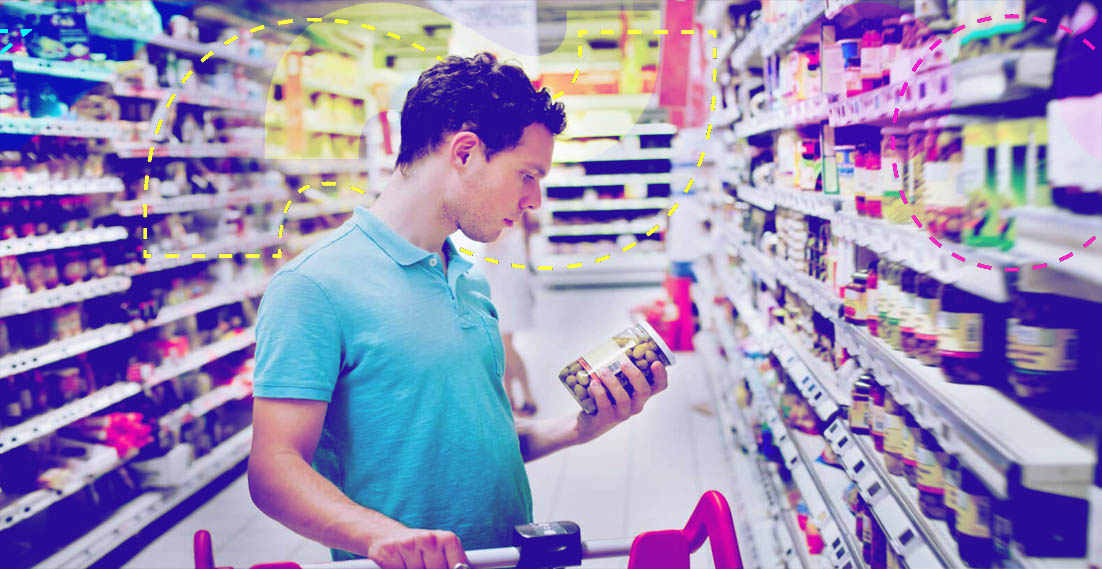Food product labels and national requirements

In addition to general and applicable in all EU countries regulations, such as Regulation (EU) No 1169/2011 or Regulation (EU) No. 1333/2008 (applying to the use of food additives), each country may have its own specific requirements for a particular food group.
Join us and work as a translator
Labels of food products on the EU market
In Poland, there are a number of additional requirements regulating the marking issues, including chocolate products, juices and nectars or jams and marmalades. Also other EU countries have a number of specific requirements for a given market. They are included in regulations that apply to food labelling in particular sectors of the food industry. The German market is characterised by highly detailed regulations applicable to labelling of various groups of food products.
For example, the ice cream segment has very specific naming requirements, and the use of the term “trace amounts” is clarified in the Czech market.
Food labels for the American, Asian and Australian markets
In the case of the American market, the biggest problem for the manufacturer is the creation of a nutritional value table compliant with the requirements of the FDA (Food and Drug Administration). The nutrition table is different from the European nutrition declaration. This table contains specific elements, such as, for example, declaration of added sugars, and determining the appropriate portion of the product and calculating the value is an additional problem for the manufacturer.
For Asian markets, the key challenge is to create the correct descriptions in the target language. Labelling of food on the Australian market also differs from the standards applicable in European Union countries, for example, food additives are specified by indicating their code, which is only a number, and not, as in the case of European markets, a number preceded by the letter “E”.
Food labels with several language versions
Increasingly more often, the labels and packaging of our consumer products (food, medicine, cosmetics, etc.) are multilingual. This is due to various reasons:
• legal reasons: in countries with several official languages, products must be labelled in those languages;
• legal considerations: in order to avoid the risk of litigation in the event of an accident, the manufacturer may decide to translate, for example, a technical manual for its employees using a foreign language;
• economic reasons: in our globalised economy, a product is very often labelled in one country before being marketed in target countries;
• “emotional” reasons: a Turkish SIM card will be more appealing to young people with a slogan in English, in Scandinavia they will appreciate French pastas more willingly, if they have an Italian label, perfumes in Poland will sell better if they are labelled “Eau de Toilette pour Femme”, etc.
The manufacturer must ensure that each of the language versions on the label contains all the information required on a given market and that this information complies with the legal requirements and that the consumer can easily find the information he/she is interested in.
What about countries with more than one official language? For example, labels intended for the Belgian market should be written in French, Dutch and German. Similarly, in the case of the Swiss market, the label should contain three languages: German, French and Italian. It is also worth mentioning that French (besides English) is also a required language for labelling products intended for the Canadian market. The labelling requirements for products in the Canadian market are similar to those in the US market, so a French-language label sold in the European market will also not be able to meet the requirements of the Canadian market.
Translating labels is a difficult task and often requires knowledge of specialised terminology.
In many cases, the translator will not be able to get all the information from glossaries and dictionaries to help in the translation process. Instead, he/she will have to go looking for similar products in the pantry or on the shelves of a supermarket.
There will also be questions: Should label text be translated literally? What does not need to be translated? How to adapt the translation of the label to the consumer in a given country?
Let’s look at a specific case of a can of sardines produced by a Dutch company with the name on the label “sardientjes fijne”, or “top-quality sardines”.
This translation challenge calls for greater attention to the phenomenon of multilingual labels, their richness and traps.
Let’s look at some examples:
1. Hair gel
EN Extra Setting
DE Extra stark
FR Spécial cheveux raides
The French ‘Spécial cheveux raides’ means that the gel is dedicated to straight hair and it may create doubts as to its relevance, because this statement is followed by a comment …”for all hair types”! Other languages emphasize the “long-lasting” effect, which looks a lot better application in this case.
2. Deodorant
Another example, this time of a deodorant shows a precautionary approach to the use of the preparation:
IT Non applicare su pelle lesa o irritata.
PT Não aplicar sobre pele irritada ou ferida.
ES No aplicar sobre piel dañada o iritada.
EN Do not apply to irritated or damaged skin.
FR Ne pas appliquer sur une peau abîmée ou irritée.
NL Niet op geïrriteerde of beschadigde huid aanbrengen.
DE Nicht auf gereizter oder verletzter Haut anwenden.
DA Må ikke anvendes på irriteret eller beskadiget hud .
SV Använd inte på irriterad eller skadad / sprucken h
You can only read a warning to stop using the product if irritation occurs in the English version.
Dutch speakers will only be able to read: Reguleert transpiratie. Huidvriendelijk. The first sentence simply says that the product regulates sweating, while the second more or less corresponds to the French terms “dermatologically tested” or “hypoallergenic”. In addition, the rules that apply to products and their packaging are not the same for all countries. Therefore, in Italy, all consumer products for everyday use must include the following statement
IT Non disperdere (il contenitore) nell’ambiente
That is:
EN Don’t litter
There is no such legal obligation, for example, in France, where the Consodurable association defines the phrase “Ne pas jeter le contenant dans la nature” as one of the general phrases about environmental friendliness and citizen behavioural incentives, […] the usual encouragement to cleanliness”.
3. Coffee creamer
The same five languages appear on the coffee creamer package. Again, the translations are not literal:
ES Creme de natas
IT Panna di caffeteria
DE Kaffeesahne
FR Crème légère
EN Half cream
So the Spanish, Italians and Germans need to know that they are consuming a light product intended for coffee? Would they be less sensitive to this diet argument? On the other hand, it seems inappropriate to make it clear to the English and the French that the cream is intended for coffee…
4. Sugar
FR Sucre cristallisé
NL Extra fijne kristalsuiker
IT Zucchero semolato setacciato extrafine a solubilità immediata e tota
Compared to French, Dutch specifies that the sugar is very fine, while the Italian version is much more detailed
5. Pasta
IT Pasta di Semola di Grano Duro
DE Teigwaren aus Hartweizengriess
EN Italian Macaroni Products
FR Pâtes alimentaires de qualité supérieur
The English consumer can be reassured: it is indeed an Italian product. Do other countries want to know this? Or maybe it is not important for sales? Finally, the term “durum wheat” is not published in English and French, and perhaps the customer concludes that “grano duro” = “Hartweizengriess” = “Italian” = “top quality”…
This short linguistic review only confirms our belief that the translation of the labels is dictated by the needs of the language of commerce and adapted to the consumers, not always in line with the actual source tone, but it is important that each of the translated (more or less faithfully) food labelling meets the applicable standards and regulations.
Translations in cosmetology and their importance for the safety of the use of cosmetics
Translations in cosmetology are intended to correctly translate the foreign content on the packaging of cosmetic products, intended for international distribution into the target language. The most frequently translated texts by translators specialising in the field of cosmetology are compositions and instructions for use of a cosmetic product. The correctness of their translation not only contributes to the effectiveness of using a given product, but often also to the health and appearance of its user.
Currently , many people suffer from various types of skin allergies – cosmetic compositions must be properly translated and written in a legible way so that the user can verify the presence of allergens on their own. In the case of products intended for professional use, however, it is necessary to correctly translate the indications and contraindications for their use so that the professional user knows whether the product can be safely used for a specific patient.
The safety and effectiveness of treatments also depend on the procedure of their performance – the translator must, clearly and in a way that is beyond any doubt, explain the individual steps and rules of the procedure, strictly translating the product manufacturer’s recommendations into the target language. Many cosmetic treatments often also require the use of specialised equipment or additional accessories, the names and parameters of which must also be detailed, described and translated by a professional who translates from the original source document.
In order to meet such high and responsible requirements, translators dealing with cosmetology translations must not only be fluent in a foreign language, taking into account specialised terminology, but also have knowledge in the field of cosmetology, chemistry, bioengineering, and often also medicine. The quality and substantive correctness of their translations of compositions and instructions for use of cosmetics may contribute to the beauty, health and even life of another person.
Label translation errors
Translation errors are often the cause of complete product recalls, resulting in financial losses and confusion for end-users. This may even pose a risk to patient safety when it comes to pharmaceuticals. Companies must therefore ensure that product information is naturally translated and highlighted to contrast colours and layout.
Free space on labels with too much information reduced to illegible font size is also a common cause of confusion and dissatisfaction for end users. Companies often include too much information because they fear that the label will not comply with the requirements or because the scope of the label production process design is poorly defined. Such labels also cause consumers to completely reject a product.
The most common causes of labelling errors and misunderstandings for the end user are:
- The packaging of similar products of one brand, which does not clearly indicate the differences.
- Same brand names for different products without a clear extension of the product name.
- No emphasis placed on product warnings and ingredients.
Here are some examples of unfortunate English to French translations:
Join us and work as a translator
Christmas Sale and Google Ads Campaign – How Marketing Translation Boosts Your Holiday Advertising
The Christmas season is a peak period for every marketing team and marketer. From e-commerce stores to service providers, everyone competes for the attention of shoppers ready to spend. A well-planned Google Ads campaign can make or break your holiday sales. But even the most creative advertising copy will fall flat if your message isn’t […]
Q4 Marketing Campaigns – The Last Call to Translate Your Online Content
In the last quarter of the year, many companies – especially in e-commerce – record their highest sales figures. Christmas shopping, clearance events, and Black Friday promotions encourage purchases not only because of discounted prices but also, due to powerful marketing campaigns that spark consumer excitement.
Black Friday in Poland – how to prepare your online shop?
tion process is not only about changing words from one language to another. It involves an understanding of local culture, brand voice, and cultural nuances.
How to increase sales in an online shop? Four ways using content translation
Wondering how to increase sales in your online shop? Check out our 4 ways with content translation.



